The risk of a bear attack while outdoors is incredibly low. Howoever, this doesn’t mean you shouldn’t take practice bear safety tactics when in bear country, one of which is carrying bear spray. There are a lot of misconceptions around bear spray though, and also a lot of mistakes which can result in injuries.
Here’s what you need to know about choosing the right bear spray, carrying and using it effectively, common mistakes and more.
Table of Contents:
- What Is Bear Spray?
- Best Brands of Bear Spray
- Most Effective Way to Carry Bear Spray
- Does Bear Spray Work?
- How to Use Bear Spray
- Common Bear Spray Mistakes
What Is Bear Spray?
Bear spray contains a high concentration of capsaicinoids from peppers. When sprayed at a bear, it irritates a bear’s eyes, nose and respiratory system. The goal is to temporarily incapacitate the bear, giving the user time to leave safely.
Bear Repellent vs. Bear Spray
Even though it is sometimes called as such, bear spray is not a repellent.
Bear repellents are things which prevent bear encounters. Some repellents, such as talking or singing, will keep bears from coming near you whereas other repellents, such as air horns, will scare bears away if you have an encounter.
By contrast, bear spray is a self-defense item against aggressive bears. It is only to be used as a last resort if a bear charges or attacks.
Also read: Which Bear Repellents Work?
Bear Spray vs. Pepper Spray
Both bear spray and pepper spray contain the same active ingredients. However, bear spray is specifically formulated for bears whereas pepper spray is meant for humans. Here are the key differences:
- Strength: Bear spray has a higher concentration of capsaicinoids, so is suitable for deterring large mammals like bears. Typically bear spray is
- Spray pattern: Bear spray releases a large fog or cloud, making it easier to hit a charging animal. Pepper spray is available in fog and stream spray patterns but does not have as wide of a spray pattern, so the user must be more accurate when aiming it.
- Spray volume: Bear spray is generally released in one continuous stream of about 1oz per second. By contrast, pepper spray is released in shorter bursts of 0.1 to 0.2oz per second.
- Range: According to EPA regulations bear spray must have a range of 25 feet. By contrast, pepper spray usually has a range of 6 to 12 feet.
- Size: Pepper spray typically comes in small, keychain-sized canisters. Bear spray must contain more spray in order to incapacitate a large mammal so the canisters are much larger.
I was unable to find any evidence (neither anecdotal nor research-based) where consumer-grade pepper spray was used against bears. This doesn’t mean you couldn’t use pepper spray against a charging bear. It would certainly be better to have pepper spray than to have nothing at all!. However, if knowingly going into bear country, it is smarter to carry bear spray than rely on pepper spray.
Also read: Bear Spray Alternatives
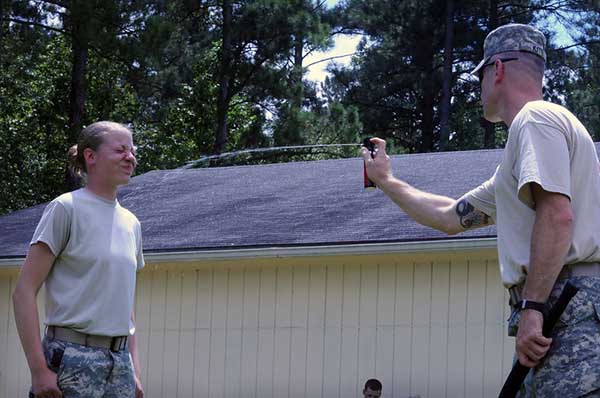
In the photo above, you can see the small range pepper spray has. You need to be VERY close and have good aim. And guess what? A bear isn’t going to stand their calmly while you spray their face!
Best Brands of Bear Spray
In the United States, bear spray is regulated by the EPA. To be legally sold, it must be meet these requirements:
- Contain 1-2% major capsaicinoids
- Have a minimum content of 7.6oz
- Shoot a minimum of 25 feet
- Have a shotgun cloud spray pattern (sometimes also called a fog pattern)
- Spray should last at least 6 seconds
So long as it is EPA-approved, it doesn’t matter which brand of bear spray you choose. Look for the EPA registration number to ensure that it is approved. However, some brands have additional features which may make them more suitable for your needs. (1, 2)
Consider:
- Canister size: Larger canisters have a longer spray time before emptying and usually a longer range. However, smaller canisters are easier to carrier, especially when backpacking.
- Holster: Most bear sprays come with a holster. This can make a big difference on how comfortable the spray is to carry and how quickly you can access it.
- Strength: The top brands of bear spray contain 2% active capsaicinoids, which is the maximum amount allowed by law.
- Range: Bear spray must have a range of 25 feet, but longer is always better.
The following bear sprays are EPA-approved.
| Brand | Size | Range | Strength |
|---|---|---|---|
| Sabre Frontiersman | 7.9oz | 30 ft | 2% |
| Sabre Frontiersman | 9.2oz | 35 ft | 2% |
| UDAP Pepper Power | 7.9oz | 30 ft | 2% |
| UDAP Pepper Power Magnum | 9.2oz | 30 ft | 2% |
| UDAP 18HP | 13.4oz | 35 ft | 2% |
| Counter Assault | 8.1oz | 32 ft | 2% |
| Counter Assault | 10.2oz | 40 ft | 2% |
Of these, I recommend Frontiersman because they have quick-draw hip belt and chest holster options.
If you are going to be thru-hiking in grizzly country (and thus won’t be able to retreat if you have a bear encounter), then you’ll probably want the larger 10.2oz Counter Assault spray (Amazon, REI) because of its long range or the UDAP 13.4oz canister since it could be deployed more than once before emptying.
Most Effective Way to Carry Bear Spray
Bear spray is useless if you cannot access it. Do NOT put it in your backpack. You MUST have it accessible at all times and be able to reach it quickly.
This means wearing the bear spray in a belt or chest holster. Chest holsters are generally more comfortable for hiking because they don’t interfere with your gait or ability to climb over obstacles, but it’s a personal preference.
Do NOT Attach the Holster to Your Backpack
Some people attach the bear spray to their backpack hip belt or shoulder strap. While this does keep the bear spray accessible while hiking, it is not recommended because…
The bear spray won’t be accessible if you take your pack off.
You probably don’t wear your pack 100% of the time while outdoors. For example, I definitely take my pack off during pee breaks while hiking. And I don’t wear my pack when setting up camp or filtering water…
For these reasons, a hip belt or chest holster is the best way to go.

This park ranger has the bear spray canister attached to his pack sternum strap. He’ll need to carry the canister with him if he removes the pack!
The same applies to cyclists and bikers. There are holsters designed for carrying bear spray in your water bottle holder or on your handlebars, but this only keeps the bear spray accessible when you are on your bike. If you do keep bear spray on your bike, remember to transfer it to a chest or hip holster each time you get off your bike.
Best Bear Spray Holsters
A good bear spray holster should:
- Hold the canister securely in place
- Allow for quick deployment
- Be quiet*
Avoid Velcro holsters.
While a Velcro strap does help keep the canister in the holster, it will make a sound each time you take it out. If a bear hasn’t see you, then you don’t want to make any noise as you ready your spray!
As Maurice Hornocker recounts of his encounter with a bear in this book,
I reached down and pulled the flap of the holster containing my canister of pepper spray…The Velcro that secure the canister sounded its characteristic chrrrrt in the quiet forest, startling the bear. He instantly started up on his rear legs and wheeled around toward me.
Unfortunately, most horizontal-carry holsters (aka cross draw or trailrunner holsters) have Velcro. There are a few brands which make holsters with elastic straps instead of Velcro though.
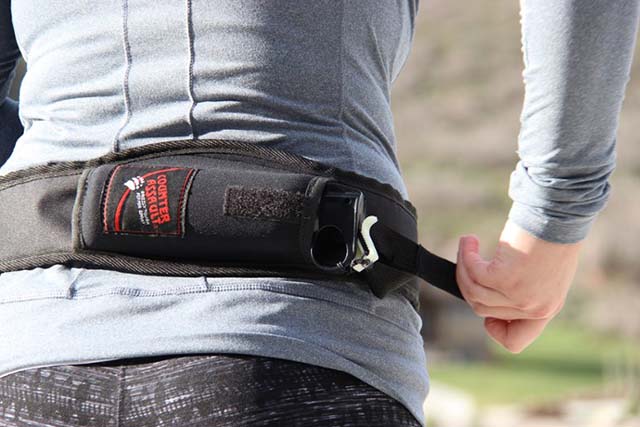
This is a comfortable way to carry bear spray, but the Velcro makes a loud noise when you remove it.
The Mystery Ranch holster shown above is quick draw and has an elastic cord instead of Velcro. It’s a bit pricy but, if you carry bear spray often, it’s worth getting a holster like this. The design holds the safety in place — something I appreciate since I’ve had the safety fall off my canister while climbing.
Does Bear Spray Actually Work?
Currently, bear spray is considered the most effective self-defense against bears. While no product is 100% effective, ample research shows that bear spray is effective in preventing or stopping aggressive bear behavior in over 90% of encounters.
In close-range encounters with bears, 98% of people carrying bear spray were uninjured. By contrast, people were injured 50% of the time when using firearms to depend themselves against a bear. (3, 4, 5, 6, 7)
Even when bear spray did not succeed in preventing an attack, it shortened the duration and severity of the attack. As Chuck Bartlebaugh, director of Be Bear Aware, noted,
I’m not aware of any case, among many I’ve reviewed, of a person dying when deploying bear spray the way it is supposed to be used.
Does Bear Spray Work on Other Animals?
The Washington Department of Fish and Wildlife says bear spray will work against almost all wild mammals. (8)
Note that there is little to no research as to how effective bear spray is against other animals. Depending on the animal, you may need to use the spray differently (such as at a closer range) and there is no guarantee of how the animal will react. Despite this, I’d still rather have bear spray during an animal encounter than no spray at all! (9)
Dogs:
Pepper spray was initially developed to protect postal workers against dogs, and an encounter with an aggressive domestic dog is actually the most likely reason for needing to use pepper spray. Bear spray will certainly work against a dog. However, because it is so strong, bear spray could severely harm or even injure a dog. If you are not in the wilderness, it would be better to carry dog spray against dogs. It contains 1% capsaicinoids instead of up to 2%, and shoots in a powerful stream instead of a fog.
Wolves:
Wolves have an even better sense of smell than dogs, so they are likely to be even more impaired by bear spray. Some wolf management specialists recommend carrying it when in wolf territory. (10)
Mountain Lions and Bobcats:
Zookeepers have effectively used pepper spray against African lions, tigers and jaguars. Pepper sprays have also have been used to successfully stop attacking tigers in Russia. Thus, it is reasonable to assume that bear spray would be effective against other felines such as cougars and bobcats. (11,12, 13)
Moose and Elk:
These are cases of moose being deterred by bear spray. If a moose is obstructing your way, the Alaska Department of Fish and Game says that, as a last resort, pepper spray will often move them, or at least provide some protection if they charge. (14)
Humans:
The legal limit for major capsainicoids in pepper spray is 1.33% whereas it is 2% for bear spray. Because it is stronger than pepper spray, bear spray will certainly incapacitate a human. However, because it is specifically meant for bears, you could be opening yourself up to a lawsuit if you use bear spray against a human. (15)
How to Use Bear Spray
Bear spray is meant to be used as a last resort to prevent or stop an aggressive bear. Make sure you know what to do during a bear encounter. There’s no need to start spraying right away. Most times, simply announcing your presence by talking and slowly waving your arms overhead while you back away is enough to keep the bear away.If the bear does show signs of charging, here’s what to do.
Important: Take Off the Safety Tie BEFORE You Go Out
When you buy bear spray, there will be plastic zip ties holding the safety on. You MUST remove the ties before you hit the trail! Otherwise you won’t be able to deploy the spray if you need it.
1. Withdraw the canister and remove the safety clip.
Even if the bear is not displaying any aggressive behavior, it’s smart to remove your bear spray immediately so it is ready to deploy.
Bear spray canisters have safety clips over the trigger. You will need to remove this by pulling it back with your thumb. This is something you should practice ahead of time so you can do it without looking!
2. Hold the canister with TWO hands.
You only need one hand to deploy bear spray. However, it’s recommended that you hold the canister with two hands:
- One hand grips the top of the canister. The index finger goes in the circle and the thumb on the trigger.
- The non-spraying hand is the “support hand.” It holds the bottom of the can with the elbow bent.
The reason this position is important is because it’s easy to accidentally spray the back of your non-spraying hand. The position also allows you to use the non-spraying hand to push and helps improve your aim.
3. Aim downward in front of the bear.
An instinctual reaction is to aim the bear spray parallel with your field of vision. However, this will cause the spray to go above the bear’s head. You want the bear to run into a cloud of spray, so it’s important that you aim downwards towards the bear’s face.
4. Adjust for wind.
Ideally, you should be positioned upwind from the bear. Otherwise, the bear spray will blow backwards into your face.
If it’s windy, then you need to account for the wind direction. If the wind is blowing toward you, try to move so the wind isn’t going straight into your face. In a crosswind, you’ll want to aim a bit towards the wind so the spray is blown into the bear’s path.
Unfortunately, this is much easier said than done – especially when your adrenaline is making your heart pound a mile a minute.
5. Spray a warning burst.
When the bear is 30 to 60 feet away, spray a 1-second burst towards the bear. Often, a single blast of spray is enough to deter a bear.
DO NOT WAIT UNTIL THE BEAR IS CLOSE TO SPRAY.
Bears can run 35-45 miles per hour. If you start spraying when the bear is 25 feet away, the bear will have already covered 5 feet by the time you release the first burst of spray. The bear will already be very close (8 to 10 feet away!) by the time it meets the cloud of pepper spray. It won’t have enough time to register the irritant and change its behavior.
6. Continue spraying in bursts.
If the bear gets closer, keep spraying in 1 to 2 second bursts. Try to spray with a side-to-side or zigzag motion so the spray makes a large cloud in front of you.
Unless the bear is actively charging, avoid the urge to release all of the bear spray. Bear spray works best at close range. You don’t want to deploy all of the spray in case the bear attacks.
7. Keep spraying until the bear stops and leaves.
Aim directly for the bear’s face as it gets closer.
8. Leave the area.
When the bear stops or retreats, back away slowly. Do not run or make sudden movements. Keep an eye on the bear to make sure it’s not following you.
Leave the area as quickly as possible, going in a different direction from where the bear went. Report the incident to park rangers.
If you are thru-hiking and cannot completely exit the area, hike away from the area. Bears sometimes return to the same area after being sprayed, so you don’t want to set up camp anywhere close by.
9. Clean off bear spray residue.
Here’s the thing about bear spray. Unless the bear was kind enough to position itself downwind from you, chances are the spray will end up EVERYWHERE.
It will end up in your eyes, mouth and nose, causing you to snot and tear up like crazy. Your skin will feel like it’s on fire. And it will get on your clothes and gear too.
The standard advice for cleaning pepper spray residue is to: apply whole milk to skin and then wash with non-oil-based soap, rinse eyes thoroughly with saline solution, and wash clothing in the machine. None of these options are feasible when you are in the backcountry.
Here’s how to clean up bear spray residue in the backcountry:
- Clean your eyes first. The tricky part is that you need to clean your eyes with sterile water without touching them. If you have gloves in your first aid kit, wear these while washing your eyes. If not, then improvise gloves out of plastic bags.
- Get out of your clothes. Strip down completely. Put the clothing in a bag and don’t touch them again for the duration of your trip.
- Scrub off residue. Bear spray is oil based, so water alone won’t get it off. You’ll need to scrub your body with soapy water. Dish soap works best since it is designed for breaking down oils.
- Wipe body with vegetable oil. If you don’t have access to lots of water or soap, you can use oil to break down the pepper spray. Any oil-based cream will also work and Vaseline also helps a bit. Put some on some toilet paper and use this to wipe your body. If possible, wash with soapy water afterwards.
- Use alcohol on gear. If you have alcohol for your stove, you can use it to get bear spray residue off of your gear.
Common Bear Spray Mistakes
Not Practicing with the Bear Spray
This is by far the biggest mistake people make with bear spray. Bear attacks can happen without much warning. You MUST be able to get your bear spray and deploy it within a second’s notice, all while your adrenaline is pumping. That simply isn’t possible without practice.
If you’ve ever had to deploy bear spray, you’ll also know that it is surprisingly forceful it is. The recoil can cause you to aim too high, thus missing the bear.
Various brands sell tester canisters of bear spray for practicing with. These canisters are identical to bear spray just without the capsicum. It is well worth the cost of the tester can.
Practice:
- Getting the bear spray out of the holster
- Removing the safety in the dark or without looking
- Aiming the canister
- Firing the bear spray while still looking at your target
- Shooting the spray in various types and directions of wind
Sabre makes an inert bear spray canister for practing. You can get it here.
Test Firing the Bear Spray
While it is smart to practice with bear spray, you shouldn’t fire a test shot from the bear spray you’ll be taking with you in bear country.
Most bear spray canisters only have about 7 seconds worth of spray in them. The first one second of spray is most powerful. After that first spray, the canister loses over half of its pressure.
If you’ve test fired a canister of bear spray, chances are you won’t have enough bear spray to repel the attack. The spray might not reach far enough to hit the bear either.
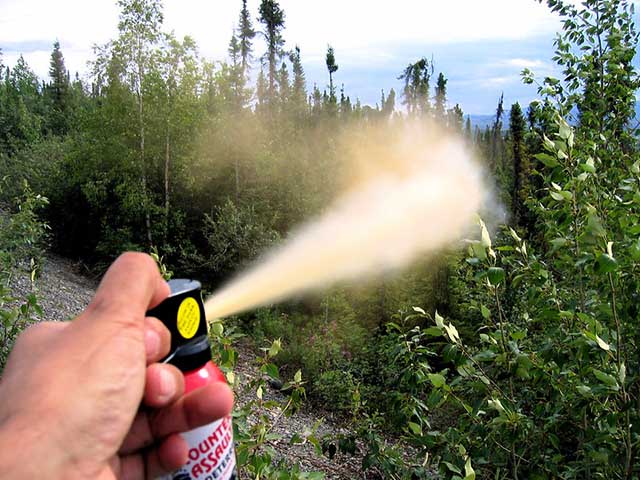
This hiker thought it would be fun to test out his bear spray. He didn’t realize that doing so caused the spray to lose more than half of its spray power.
Not Having One Canister Per Person
Bear spray can be expensive at about $50 per canister. But don’t try to save money by sharing one can amongst your group of hikers. Each person needs their own canister of bear spray.
Foremost, you probably aren’t going to be together every moment of your outdoors trip (I don’t take company with me on bathroom trips!). It sometimes takes more than one canister of bear spray to stop an attack – especially if the first canister was fired too early or too high. The more people with bear spray, the safer you will be.
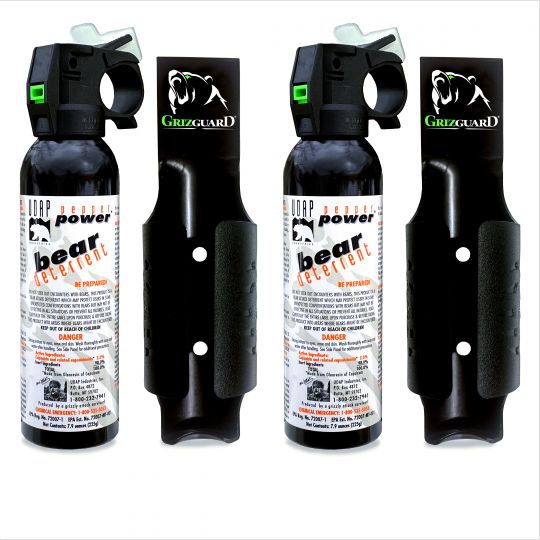
UDAP is one of the most popular and affordable brands of bear spray. It’s cheaper when you buy it as a two pack. This set includes two canisters and two holsters.
Using Expired Bear Spray
Bear spray has a shelf life of approximately 4 years. Unlike with best-by dates for food, this is something you actually want to take seriously.
While the pepper in the bear spray remains potent for many years, the propellant in the canister starts to leak and weaken over time. One study found that bear spray brands lost 0.65 to 1.92 grams of propellant per year.
What should you do with expired bear spray? Use it as a tester spray.
Keeping Bear Spray in Your Car
You know those warnings that bear spray can explode if left somewhere hot, like the inside of your car? Yes – that actually can happen. Like this case of exploding bear spray which shredding the holster. Or this case where someone left bear spray in the car and “the hot sun turned it into a spice missile that shattered the windshield and coated the inside in no-no foam.”
There’s also this story of a canister of bear car that got left in the car after a camping trip. The canister ended up under the passenger seat. The passenger tried to move the seat back and punctured the can. While driving. It’s a miracle that an accident didn’t occur.
The moral? Take those warnings seriously. Don’t leave bear spray in the heat and put it away immediately after your trip.
Want bear safety info in PRINTABLE format?
Then you need my Camping Cheat Sheets.
The manual has 42 pages crammed with illustrated guides about everything from campfire cooking to wilderness first aid.
And because you made it to the end of this post, I’ll even give you 50% off 😀
Get Your Copy for 50% Off Here
Image credits:
“Bear spray” (CC BY 2.0) by jkbrooks85
“dh 46” (CC BY-NC 2.0) by vikapproved
“Bear Spray” (CC BY-SA 2.0) by Flying Puffin,
“Crapper” (CC BY-NC 2.0) by Travis S.,
“Got our bear spray…” (CC BY 2.0) by sf-dvs


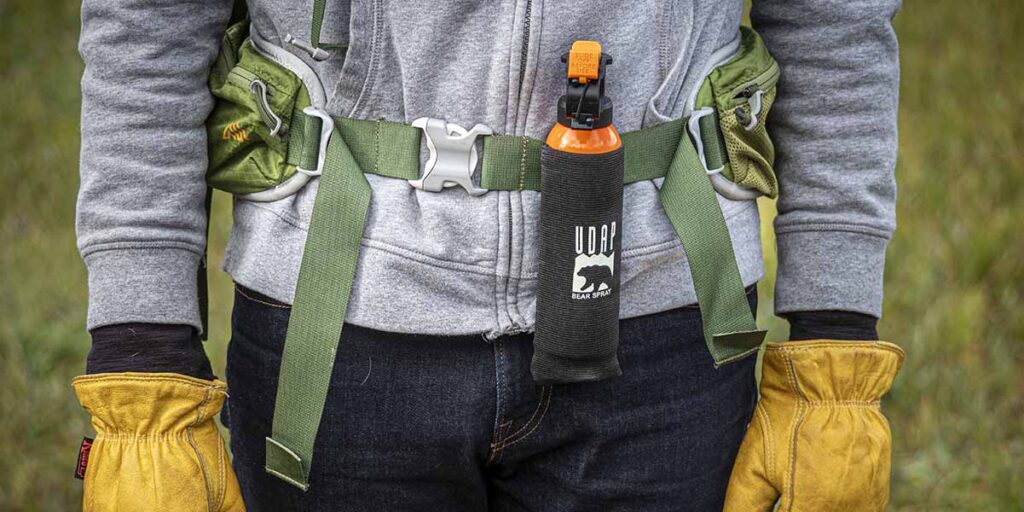
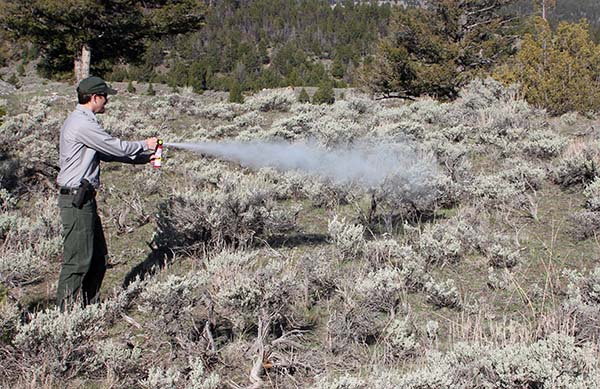
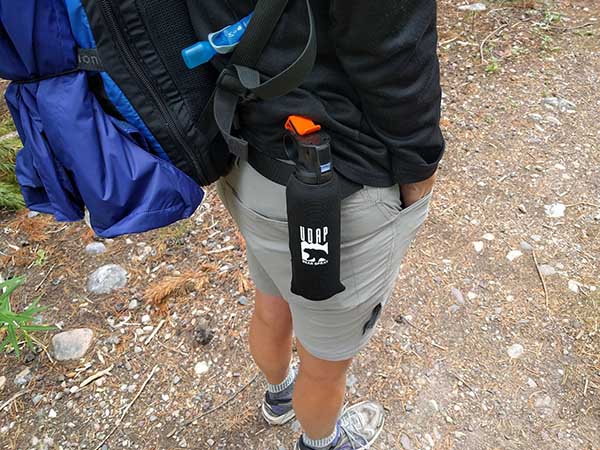
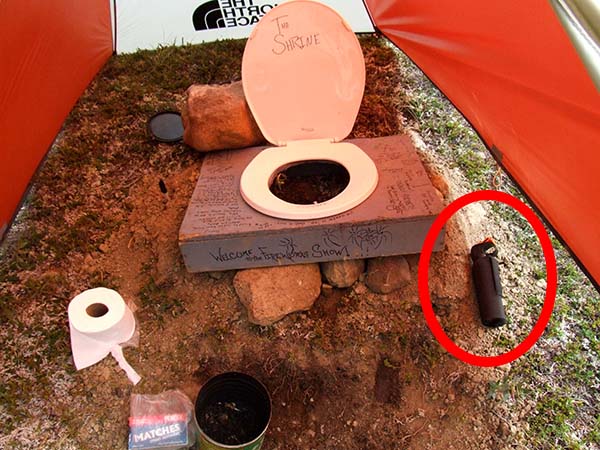
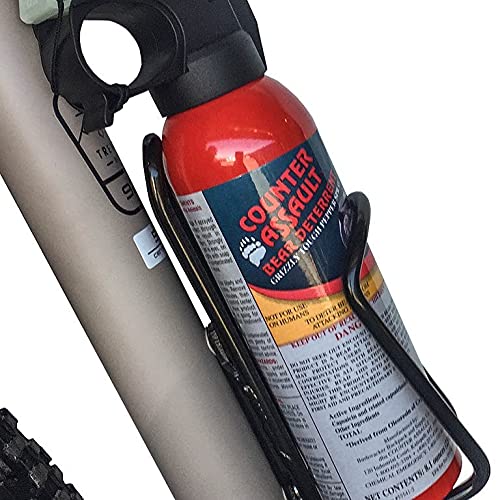
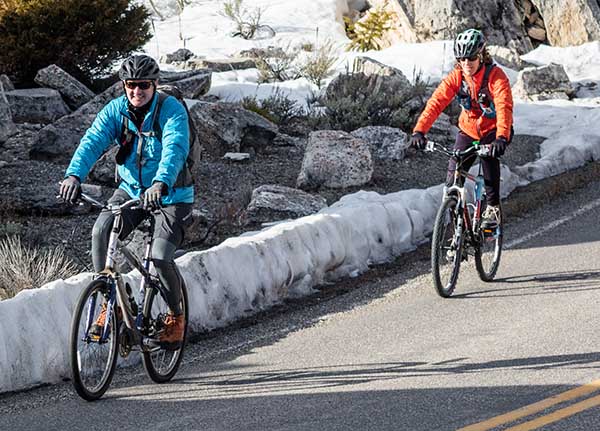
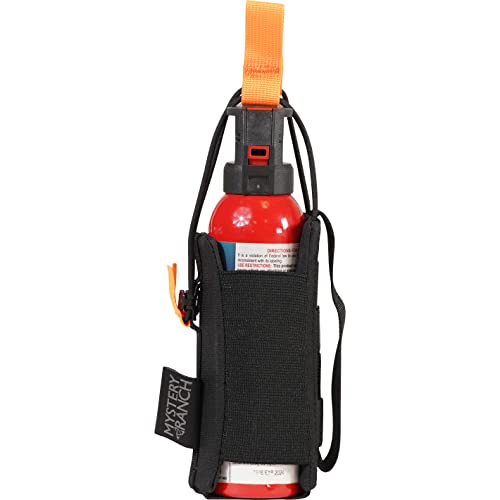
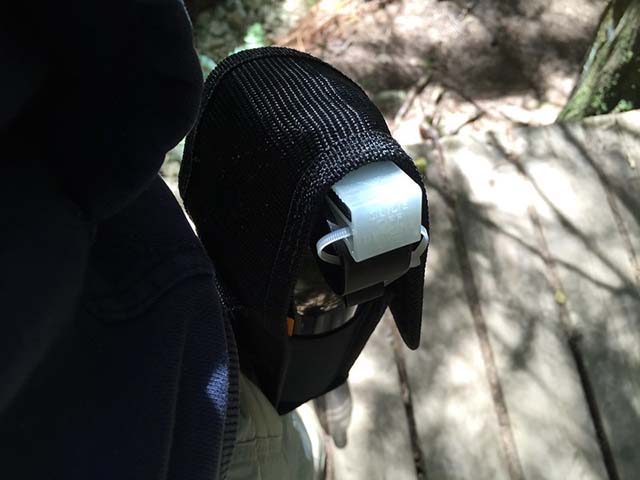
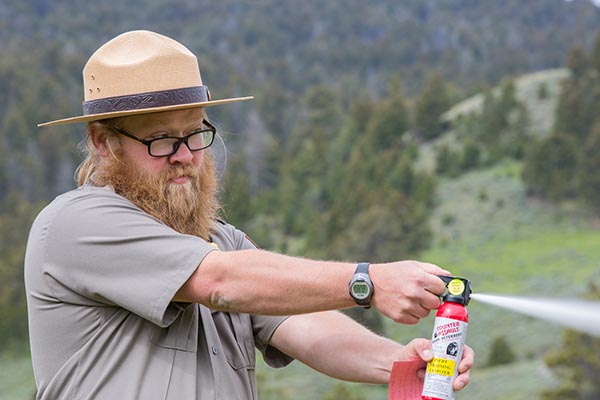
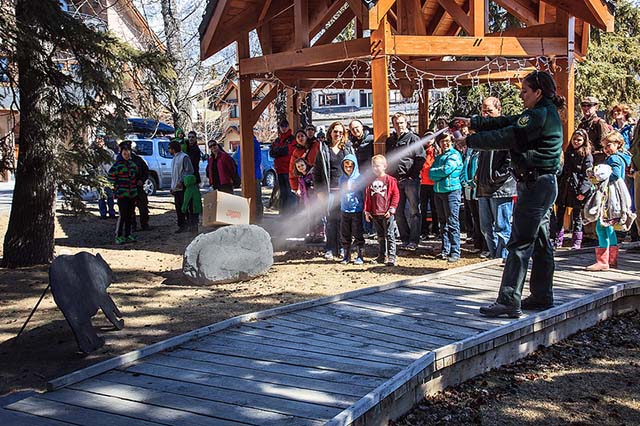
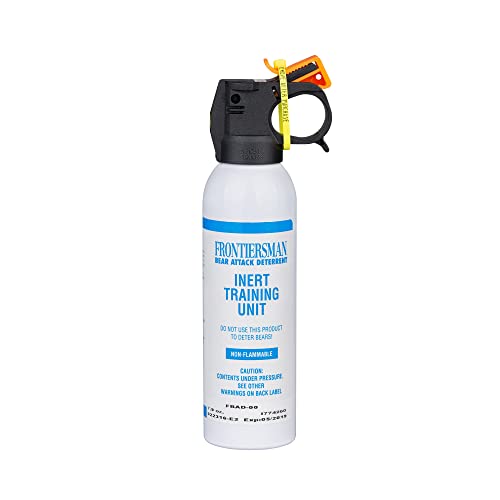
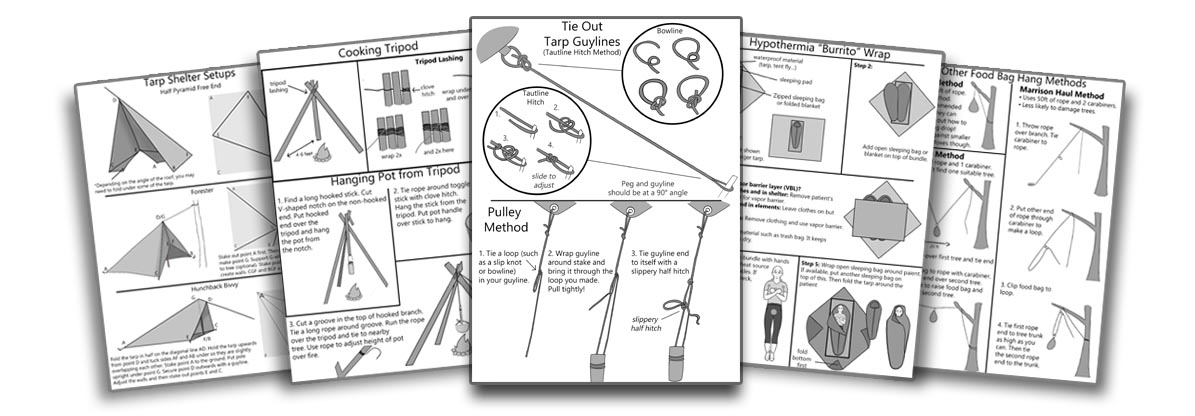
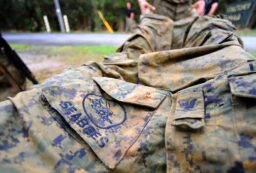
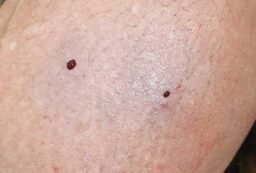








Post your comments